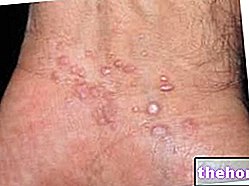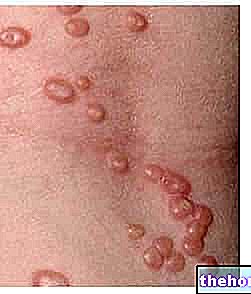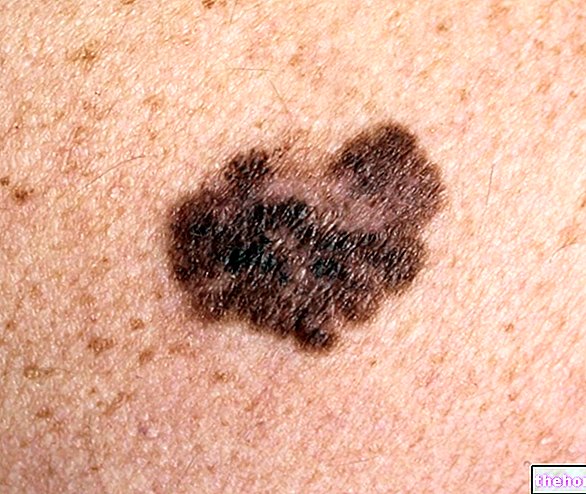and substantially belong to three different genres: Microsporum, Epidermophyton And Trichophyton.
Furthermore, even yeasts (such as, for example, Candida) can give rise to cutaneous mycosis.
There are several factors that can favor the onset of these mycoses. Among these, we remember:
- a reduced efficiency of the immune system;
- the use of antibiotics that can destroy the bacterial flora of our organism favoring the appearance of opportunistic fungal infections;
- diabetes, since high blood sugar levels can favor the proliferation of certain types of fungi found in different areas of the body and which are normally not pathogenic, but can become so when they proliferate excessively.
- Finally, poor personal hygiene can also contribute to the development of cutaneous mycoses.
The information on Skin Mycosis - Drugs for Skin Mycosis Treatment is not intended to replace the direct relationship between health professional and patient. Always consult your doctor and / or specialist before taking Skin Mycosis - Drugs for Skin Mycosis Treatment.
.Usually, for the treatment of this type of mycosis, it is preferred to use antifungal drugs for topical use. However, in the event that topical therapy is not effective, the doctor may decide to resort to systemic administration of antifungals.
Furthermore, it is good to remember that in order to promote healing, correct personal hygiene - as well as the hygiene of clothing and footwear - are fundamental factors.

Below are some of the main antifungal drugs most used in the therapy against cutaneous mycosis and some examples of pharmacological specialties; it is up to the doctor to choose the active ingredient and dosage most suitable for the patient, based on the severity of the disease, the state of health of the patient and his response to treatment.
(Canesten®) is an azole-type antifungal drug widely used in the treatment of cutaneous mycoses, such as cutaneous candidiasis, pityriasis versicolor and ringworm of the feet and body.
It is an active ingredient available in various pharmaceutical formulations, such as sprays, creams and powders for skin use.
Usually, it is recommended to apply the product directly on the area affected by the fungal infection, two to three times a day. The treatment, then, should be continued for at least two weeks after the symptoms have disappeared.
For the treatment of cutaneous mycoses, miconazole is available in the form of a cream, solution, spray and skin powder, and also in the form of dermatological milk.
Generally, it is recommended to apply the product once or twice a day, directly on the affected area. The duration of treatment can vary from two to five weeks. In any case, the doctor will provide the exact indications on the dosage of the medicine for each patient.
(Nizoral®) is another azole-type antifungal drug. It is mainly used in the treatment of cutaneous candidiasis and ringworm of different origins (of the body, of the feet, versicolor, etc.).
For the treatment of cutaneous mycoses, ketoconazole is used in the form of a cream, which must be applied to the area affected by the infection once or twice a day. Again, the duration of treatment varies from two to six weeks.
(Lamisil®, Lamisilmono®) is an antifungal belonging to the chemical class of allylamines. Its use is particularly suitable for the treatment of cutaneous mycosis caused by both dermatophytes and yeasts.
It is available in pharmaceutical formulations suitable for both oral and cutaneous administration. When administered through this last route, it is recommended to apply the terbinafine-based product (cream, gel, solution or spray) on the area affected by the mycosis once or twice a day.
When administered orally, however, the dose of drug used in adult patients is 250 mg per day, to be taken in a single dose or in divided doses. The duration of the treatment will be determined by the doctor.
Griseofulvin is available for oral administration in the form of tablets. The dose usually used is 500-1,000 mg of active ingredient per day, which can be taken in a single dose or in divided doses.
In any case, the doctor will decide the exact amount of drug to be taken and the duration of treatment, depending on the severity of the cutaneous mycosis to be treated.




























